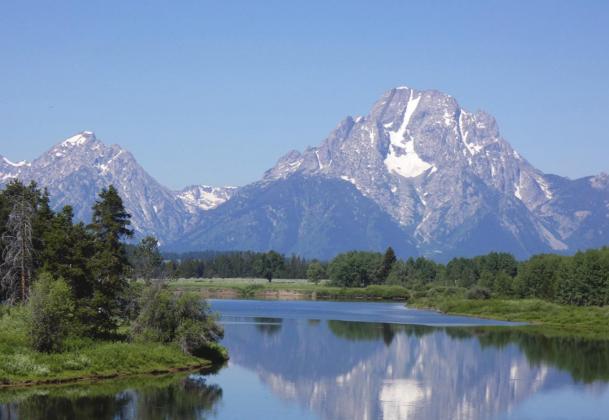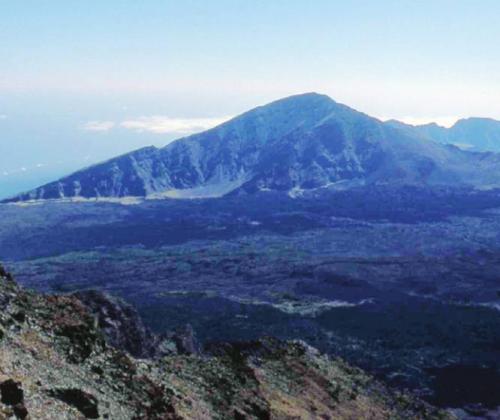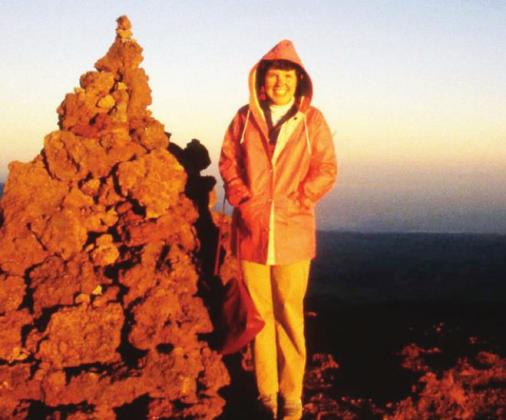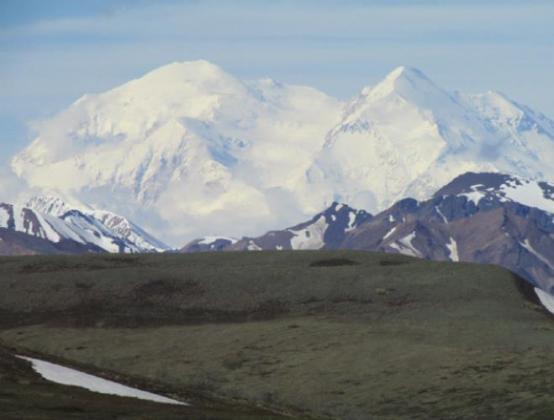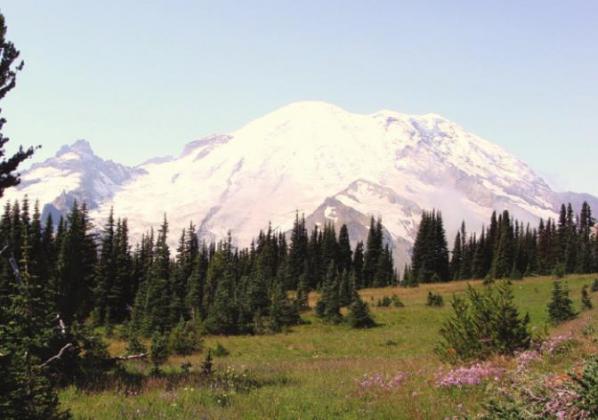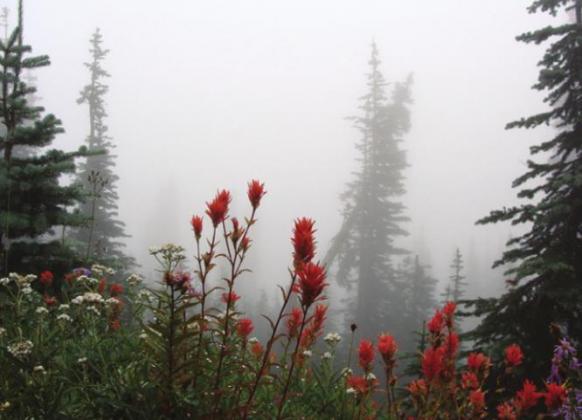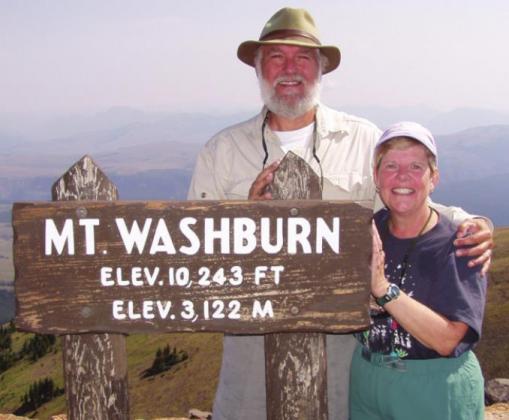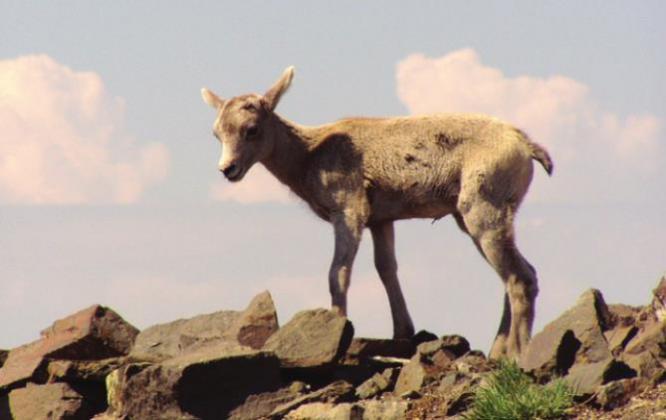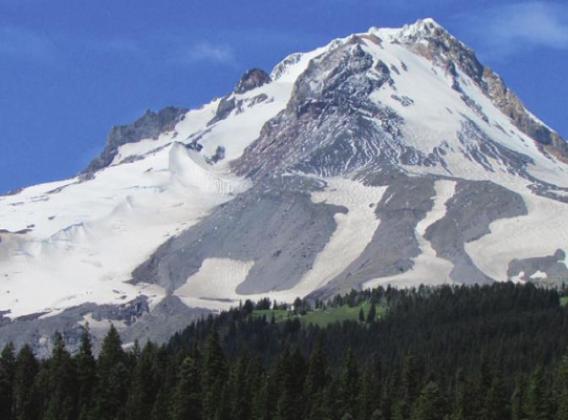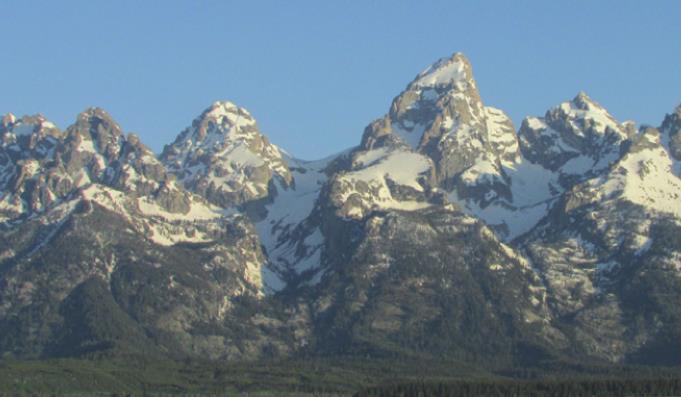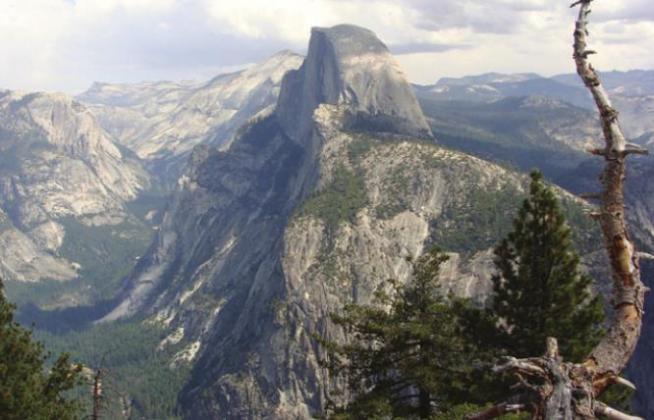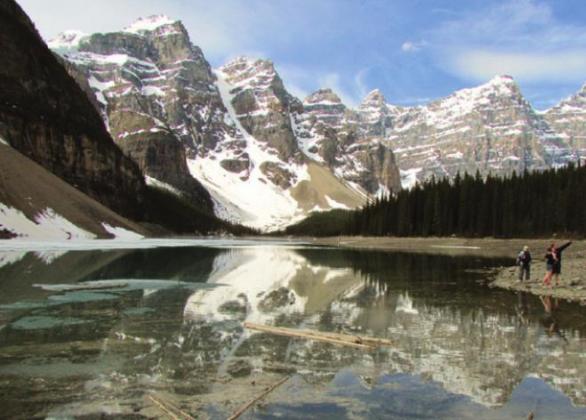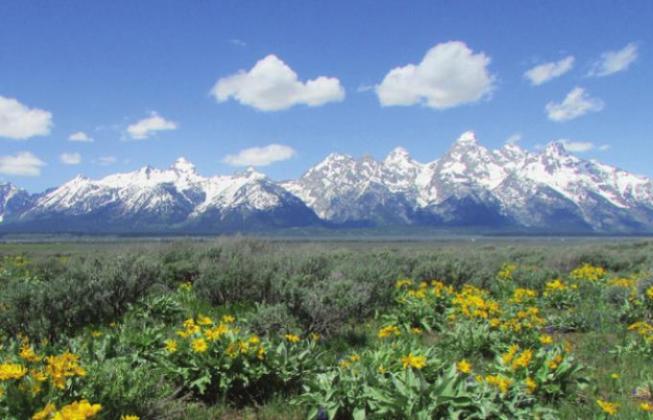MOUNTAINS HAVE BEEN HELD SACRED in many cultures as the places of intersection between heaven and earth. As such, they are destinations for pilgrimages and sacred encounters with the spiritual. Think of Mt. Sinai where Moses received the Commandments; the mountain where Jesus was transfigured; Mt. Olympus, home of the Greek gods. Where there were no natural mountains, they were built: Ancient Mesopotamian ziggurats, Egyptian pyramids, and New World wonders, like Machu Picchu, erected by the Incas, as well as numerous others created by the Mayans and Aztecs.
Modern Americans may think we are far too sophisticated for such primitive concepts. Even so, millions of us make pilgrimages to mountains every year. We might tell ourselves that we are just going sightseeing, hiking, or skiing but, once there, we find our spirits lifted at least as high as our bodies.
One July, Shirley and I with our three daughters were in Acadia National Park near Bar Harbor, Maine. We had some lobster and took Ocean Drive to explore tidal pools for colorful sea anemones and other examples of what the kids called “yucky stuff.” Then we climbed Cadillac Mountain following a route marked by stone cairns. (Five-year-old Jessica wanted to know who this Karen was.) Though much of Mount Desert Island is wrapped in the deep green of spruce, pine, and hemlock, the top of Cadillac is barren rock and treeless, so views are unobstructed. From the crest, near sunset, we looked down on the harbor as a huge cruise ship joined dozens of private pleasure craft with all their lights ablaze. Though rays of the setting sun still touched the top of Cadillac, it was already dark down there. But not for long. It was Independence Day and the folks in Bar Harbor were celebrating. It was the first and only time we have enjoyed fireworks looking down rather than up. A couple seconds after each burst faded, the sound finally reached us.
One more thing. On an earlier trip to Acadia, I had been on Cadillac for another event. Got up at 3:00 a.m. because I had read that Cadillac was where the very first rays of sunlight touch the US. No wind. Profoundly quiet. Profoundly spiritual. Well, let us not go overboard. Wherever you happen to be when touched by first light can be pretty good.
And there is a corollary for that. Shirley and I were on Maui escaping snow in the Midwest. (Got the last flight out of Chicago before they closed the airport.) Went snorkeling, took a whale-watching cruise, strolled the beach, and drove to Heavenly Hana via the 670 sharp curves and 70 onelane bridges. The road is cut into the cliff face of black volcanic rock. Swam in the Seven Sacred Pools between the waterfall and the ocean.
Decided to visit Haleakala National Park for the sunrise. The rim of Haleakala volcano is at about 10,000 feet, and there were several things we needed to know before heading up there. What time is sunrise, and how long does it take to drive the switchback road up the mountain from sea level in Lahaina? No point in arriving 10 minutes too late. What is the weather forecast? Why get up in the middle of the night if the mountain is likely to be wrapped in clouds?
The weather hotline dedicated to Haleakala said to expect clear skies, so we left at 3:30 and arrived at the rim of the volcano at 6:00. Sunrise was due at 6:57, so we were golden. The stars in the east faded out as the sky started to turn all mauve and rosy. We joined a small crowd gathered for the event—some of whom had neglected to come prepared. Maui may be a tropical paradise at sea level, but at 10,000 feet, temps were in the 30s and we needed the coats we wore leaving Toledo.
The sun appeared as an orange sliver, and then, like Jack-in-the-box, it suddenly popped up from behind jagged mountain ridges. Then it became clear that those distant “mountains” were actually the far rim of the caldera. Of course, they were. Haleakala is the highest point on the island. There are no other mountains at eye level. Unless you count Mauna Kea that is visible way over on the Big Island. At 13,803 feet, there is snow skiing on Mauna Kea. Some silly geologists even claim that Mauna Kea is the highest mountain in the world—3,661 feet taller than Everest. But that is measuring from the base of the mountain way down on the ocean floor rather than from sea level where normal people see it.
One mountain that does not require geologists to cheat on its be-half is Denali, or Mount McKinley as it was once known. Denali is the highest mountain in North America at 20,320 feet and is the centerpiece of the Alaska national park of that name. Millions of park visitors would like to see Denali, but 70% of them won’t. Tourists by the busload and trainload arrive at the Riley Creek entrance having first taken a plane, cruise ship, or the Alaska Ferry up the Inside Passage from Bellingham, Washington. Tour groups come and go on a predetermined schedule, so if Denali is wrapped in clouds, they are just out of luck. The mountain is so big it generates its own cloud cover and weather patterns.
When Shirley and I arrived, we were among the disappointed 70%. Fortunately, as campers we had the flexibility to hang around until the weather was favorable. Meanwhile, we went to dog sled demonstrations and drove the first 15 miles of the park road to Savage River to enjoy the scenery and see some bears, moose, and caribou. Access beyond that point is limited to park buses and those on foot or bicycle.
Conditions looked favorable on the third day, so we booked seats on a big green park bus for the eight-hour tour. The driver said he had to keep his eyes on the road because of the steep drop offs but if we spotted interesting wildlife, we should call out for him to stop for photos. There were many stops. Which is why it takes so long to go 89 miles. Eventually, he said he was not going to stop again unless a herd of caribou was blocking the road. Around the next bend, there they were as if reading from his script.
In the far north, even “little” mountains can seem huge because the much lower tree line exposes more of the mountain itself. Several times on the trip out, passengers asked the driver if that was Denali over on the horizon.
“Nope. You think that’s big? You ain’t seem nothin’ yet!”
Denali’s apparent size is further enhanced by all the itty-bitty mountains at its base. The Cassin Range is made up of mere 8,000 footers. It’s as if Snow White had sent the dwarfs to play basketball against Shaquille O’Neill. They would make Shaq look even more impressive than his 7’1” and 325 pounds.
The first successful ascent of Denali was made in 1913, and about 1,000 climbers try each year. Most don’t make it even though they are highly skilled and have sophisticated climbing gear. Park visitors more typically go out there just for the view. And to brag about it. As I am doing right now.
All this talk about weather in the mountains reminds me of yet another. We arrived at Mt. Rainier NP in the state of Washington by driving through heavy fog, mist, and rain. Amused ourselves in the campground and hung out in the park lodge for a couple days. Then Shirley finally convinced me to take the road to the other side of the mountain. (It always grieves me to admit she is right. I spend a lot of time grieving.) The sky was blue over at the Sunrise ranger station—even so, the ranger there said he had not seen the mountain in more than a week. A loop trail from the visitor center climbs steeply at first but runs fairly level for a while as it passes through meadows of wildflowers and emerges in tundra above tree line near Frozen Lake. The trail was busy at first, but there were fewer and fewer hikers the farther we went. By the time we crossed the ridge and started to descend the back side of the loop, we were alone.
Sometimes significant effort may be required to have experiences like this. But the effort is always strictly voluntary. Behind the Alpine Visitor Center in Rocky Mountain National Park, at 11,796 feet, is a gravel trail that goes almost straight up to 12,005 feet. Though 209 feet doesn’t sound like much of a climb, there are no switchbacks to reduce the angle of incline. So, it is like climbing a 20-story building on the steepest set of stairs you will ever encounter. Trail Ridge Road itself reaches 12,183 feet, so it is easy to convince yourself that there is no real need to risk a myocardial infarction just to pose for selfies behind the sign at the top.
Mt. Washburn in Yellowstone NP, at only 10,243 feet, is no competition in height for Denali or the 58 peaks over 14,000 feet in Colorado. Even so, the six-mile walk from Dunraven Pass lifts the souls of thousands of park visitors every year. In spring, brilliant golden wildflowers cover the flanks of the mountain. The final stretch of the ascent is along a narrow ridge with grand views to either side. There is a stone fire tower at the summit and a pretty good chance to meet some bighorn sheep. The view extends from the Grand Canyon of the Yellowstone all the way back to Yellowstone Lake. On particularly clear days, you can see the Tetons on the southern horizon. It is simply breathtaking. Partly because of those views but also because there is about a third less oxygen up where heaven and earth come together. The hike up Washburn is not advised in September and October when grizzly bears are fattening up for the winter on huge quantities of pine nuts. And the occasional tourist or two.
When our family climbed Washburn for the first time, the upper trail was two or three inches deep in slush with snow banks rising head high on either side. Fortunately, we had worn our waterproof hiking boots and cold-weather gear. As we neared the summit, we met a young woman wearing a short skirt and a sweater wrapped around her neck. On her feet, open-toed wooden clogs. She was either the toughest hiker in the world or had gone numb several miles back and didn’t feel a thing.
We think the experience of Washburn is well worth the effort. Still, there are numerous experiences that require little or no effort at all. Our favorite road through the mountains is undoubtedly in Grand Teton National Park where the road runs through Jackson Hole rather than over high passes. Unlike most mountain ranges, there are no foothills at the base of the Tetons. They rise steeply and spectacularly from the valley floor like the beginning of Handel’s Hallelujah Chorus. Tour buses bring visitors from all over the world who eagerly pile out for photos. Those who are young and agile take turns getting pictures of each other leaping and clicking their heels while grinning wildly, waving their arms overhead. Little blue-haired ladies with aluminum walkers tend to be slightly more sedate. Slightly. Grins are just as big, but jumping gets them only a couple inches off the ground. Clicking of heels tends to be rare. Like them, you could probably figure out a suitable way to express your joy in the presence of such grandeur. Even if you never get more than a few feet from your vehicle, the drive itself is just a walk in the park.
LeMoyne Mercer is the travel editor for Healthy Living News. If you are contemplating a trip, you might want to see photos and information about numerous destinations at AnotherWalkinthePark.blogspot.com. ✲

